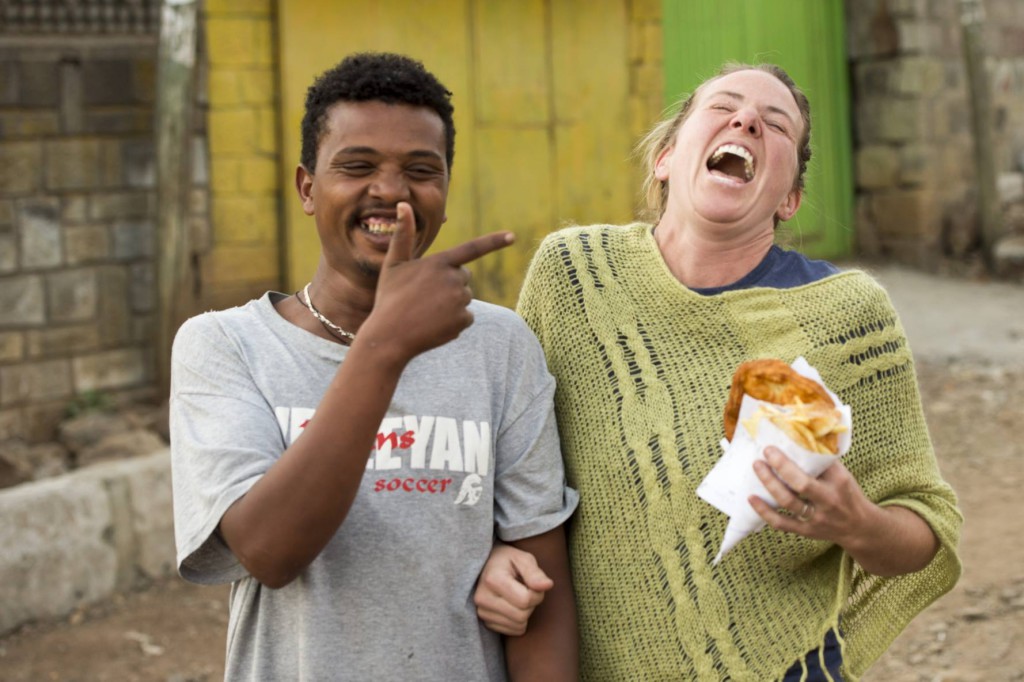
“I’m not sure if he was recommending the street food, or cautioning me. Basically, I have no idea what we were talking about, but it was really funny!” Alyssa Bray with a new-found friend in Ethiopia. Photo by Rick Egan.
If you need a little proof of Alyssa Bray’s easy-going nature, just take a look at her swimsuit (the tata top). If you don’t feel like clicking on that link, it is exactly what it sounds like—a skin-colored bikini with printed nipples, all to support breast cancer and body-awareness initiatives. This is just Exhibit A of Alyssa’s sense of humor – one that isn’t merely amusing, but also embedded in thoughtfulness. She is hilarious, crafty, athletic, good with animals, encouraging, and a great friend. There is more to her then just these qualities, that is why she is Good Peep #2.
Alyssa works for the Children of Ethiopia Education Fund in Salt Lake City, Utah. This nonprofit allows young girls in Ethiopia who come from impoverished circumstances to have a quality education through the support of U.S. donors. They focus on girls because the female literacy rate in developing countries is one of the main signifiers of economic development: teach women to read and you change the whole country. Currently they have about 330 female students sponsored at $300 a year. This amount covers the girl’s tuition, uniform, and supplies for a private school education for the entire year.
Earlier this year, Alyssa traveled to Ethiopia for a three-week trip to actually meet the folks she’s been working for and to show sponsors where their dollars have made a difference. Alyssa is passionate about her work and immersed herself in the trip in a way that not many 41-year-olds would. The schoolgirls they visited took a while to warm up to her, but soon they would be laughing, dancing, and braiding her hair. As she puts it,
“I was in such a new place, but I felt so welcomed by everyone. It was really just pure human curiosity. I met a lot of people from them braiding my hair or taking selfies together. Talking to the people or interacting with them… at home I consider myself an introvert, but over there, I just absorbed it all.”
While she was there, Alyssa felt her senses constantly bombarded. The colors were extraordinary and her nose was assailed with two extremes, from lush plants, mountains, coffee, and spices to garbage and human waste. There were house markets where one house sold chicken, one sold butter, one sold spices—while the gutter outside would be used as a communal latrine.
Ethiopians are resourceful people who use everything just as long as it possibly can be. Buildings are picked over for anything that can be recycled. As a result, new buildings can often look old just because they are built out of reused parts. One woman Alyssa saw was using an inexpensive plastic bucket that had a large crack down the side. She had punched holes in either side and lashed it together with string so the container could still be useful.
When Alyssa headed back to the U.S. she realized that the biggest culture shock wasn’t in going to Ethiopia, but in coming home. As she put it, “We have a very disposable culture with a lot of waste and excess. It is almost disgusting in some circumstances… [there is] antibiotic everything, excessive everything, rules for everything, keeping people safe from their own stupidity… It is my culture and it is shocking to me.” The numbers support her impressions. The United States is the most wasteful nations in the world: in 2012, Americans generated 251 million tons of trash, an average of 4.38 pounds, per person, per day (epa.gov, 2012).
When Alyssa came home she wept. She spent weeks upset by the contrasts she had experienced. Even the smell of fast food would make her sick. She felt these things because she had opened herself up completely to experience another place and its people. As a reward, she has changed her own life forever. This is not an easy feat, especially in a time when it is very easy to isolate yourself and compartmentalize your experiences. But not Alyssa, she is out there, working even more voraciously to make a difference for the girls she met in Ethiopia. And though she hasn’t resolved the challenges she felt in coming back home, she has let herself experience them absolutely. This embrace of life in its entirety is an essential step towards great things.
If you would like to sponsor a Ethiopian girl’s education, visit here. Who knows, maybe you’ll be the next one on a sponsor trip to Ethiopia!
A few more great pictures, because she had so many!

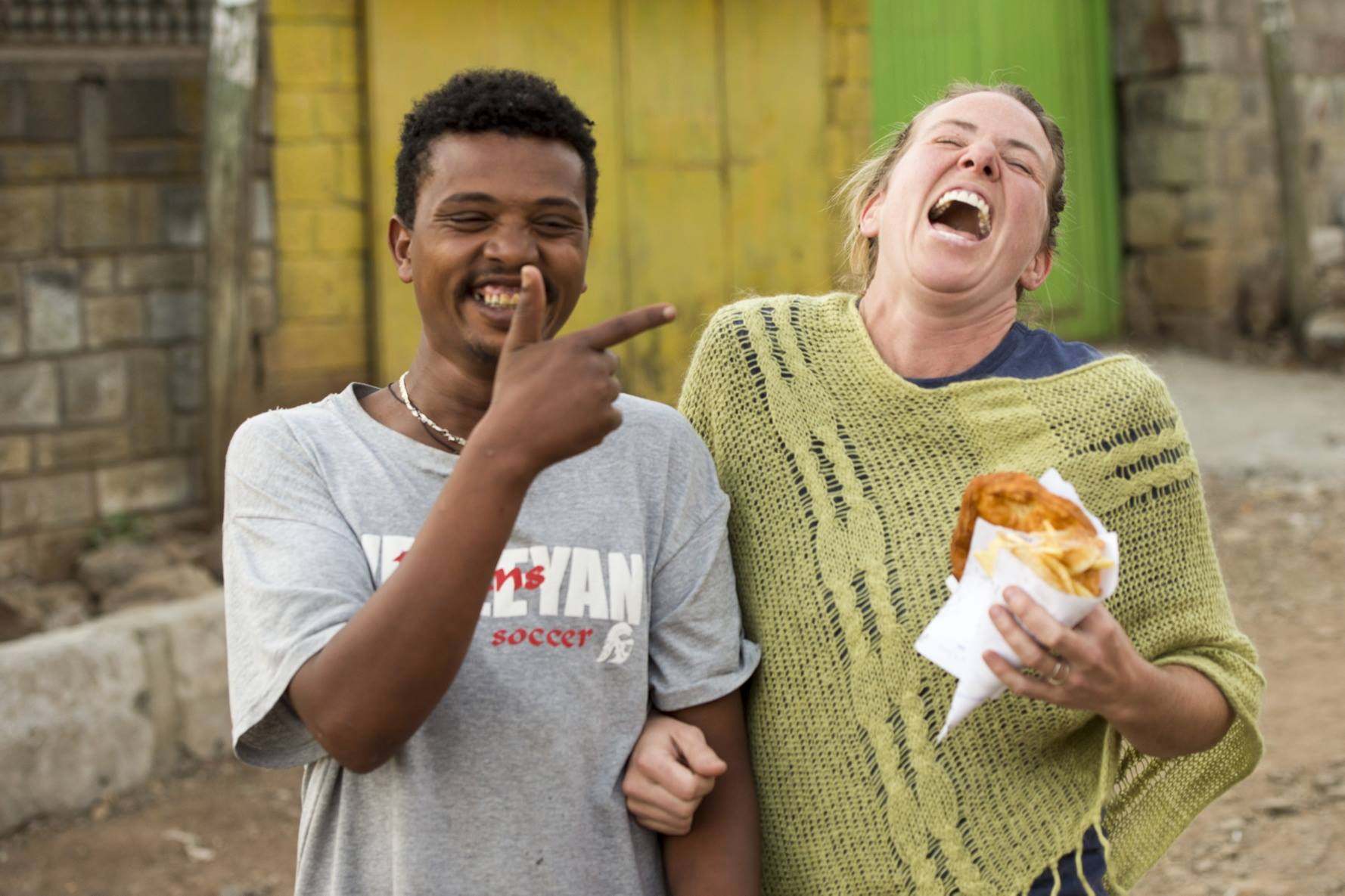

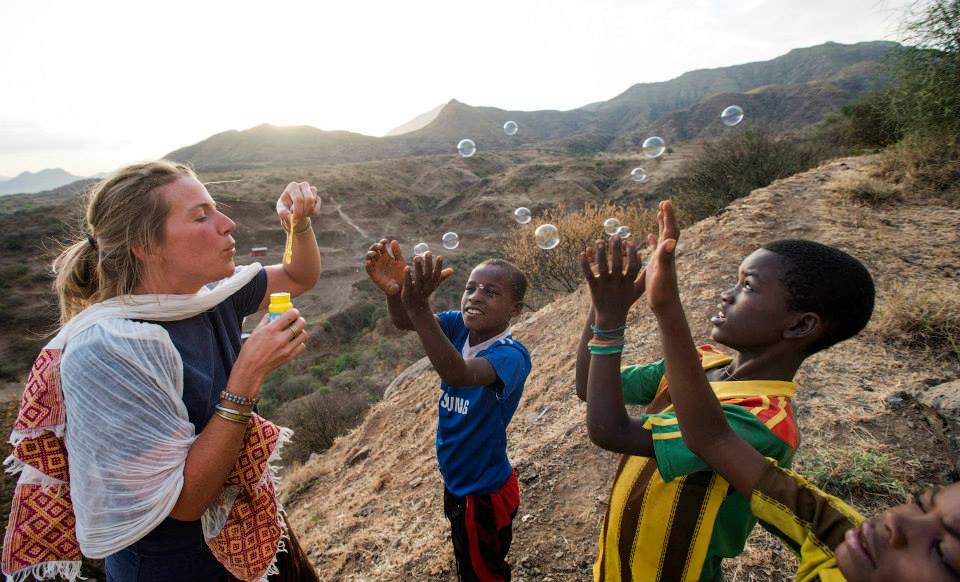


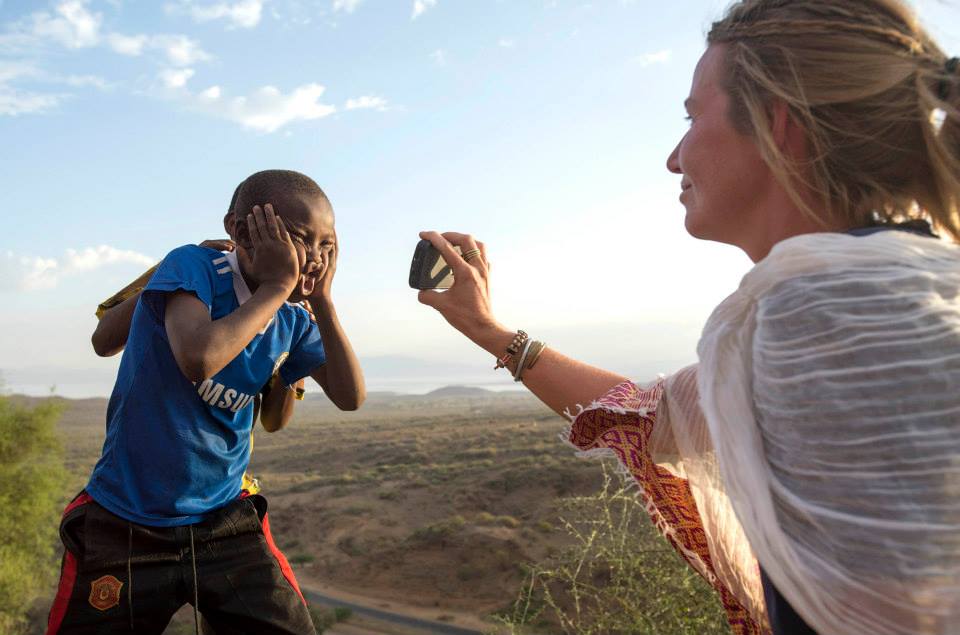
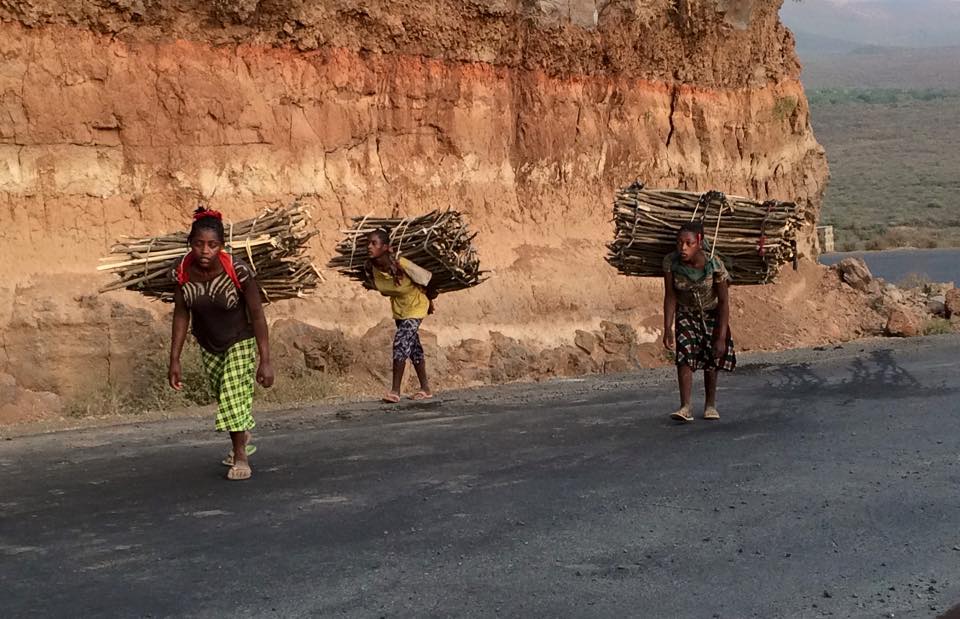
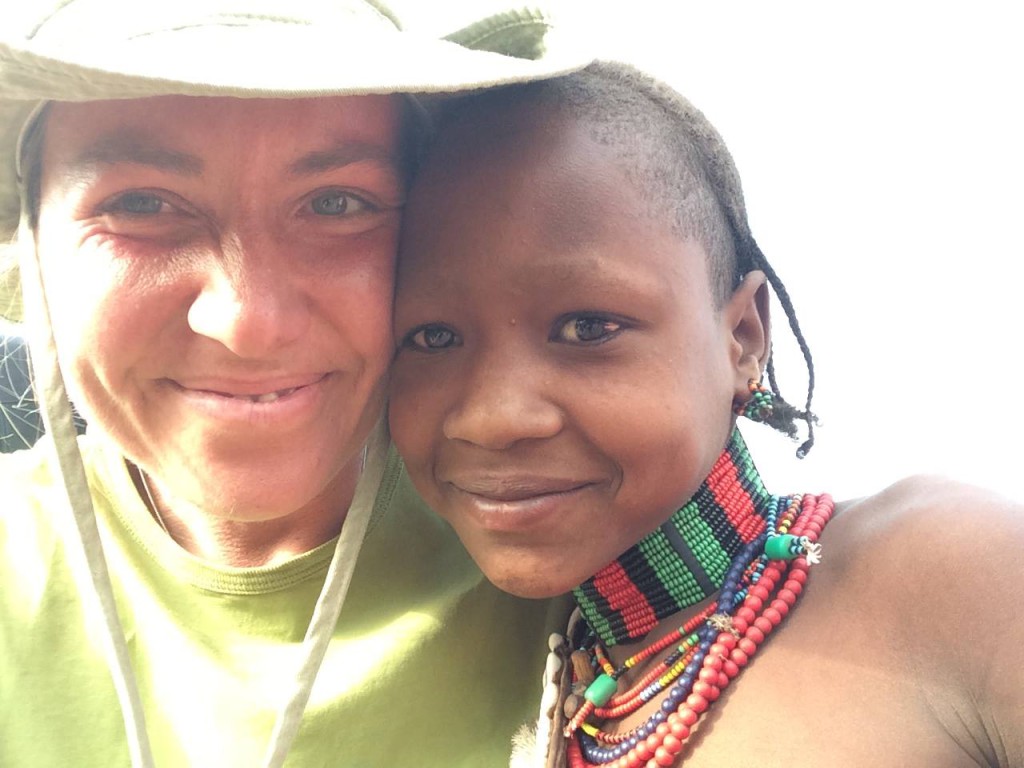
Comments
What a worthy subject; Alyssa is one of a kind! I’m glad to see her many natural talents put to good use in her work with COEEF. These photos warm my heart.